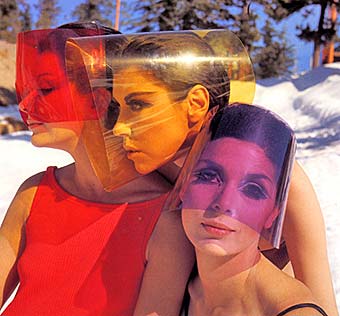

additional images available at stevenkleinstudio.com
Hey peeps. Just gave this presentation for a Media and Communications class, and figured a theoretical discussion of Sex, Violence, Torture and Steven Klein would make a great post. Though I did delete a lot of the more boring, theoretical shit...
First appearing in the February 2009 edition of the French Vogue, Steven Klein's fashion spread, entitled "Lara Fiction Noire" quickly polarised its viewers. Featureing supermodel Lara Stone, these images imply physical violence in a domestic setting. Many people supported Klein's unique and uncompromising representations of domestic violence, while protestors claimed that the stylised images glorified and sexualised violence.
Before long, this series of images appeared on the Internet, spreading like a rash across blogs and forums. Three additional images, which had been removed from the Vogue publication, quickly alerted viewers that the magazine had censored out some of the more confronting images.
Western societies have dramatically altered in their views and positions of death. "In earlier centuries, material death was experienced as a nearby reality, as corpses tended to be buried in nearby pits and graveyards, and decomposed bodies and bones turned up when new trenches were being dug. Moreover, criminals were executed in public squares". Death was a concrete and everyday occurance. However, in contemporary society, death as become a sanitized and private experience, occuring in dehumanized settings of hospitals or faraway regions of war. Public deaths, such as road accidents and natural disasters are quickly shielded from the public eye as officials cover the victims with cloths and hurry them into emergency vehicles. Death now comes with an obligatory hushed tone, it is a dirty word we hesitate to utter in public. It is a topic we can largely avoid. It is a shock when its ugly head appears in our lives.
Klein's photography refuses to comply with societies regulations. He describes his inspiration as the conflicting reactions we have to images of blood, pain, death and torture. "It was the mystery of blood, how it stir in us a primal reaction, be it religious, or that of horror and revulsion or viewing it merely as a biological fact. For me, the blood images are about how blood links the body and the soul" (Klein, theimagist.com). Klein's images exaggerate and beautify death and torture to such an extent that as viewers we are forced to review our reactions to these issues. In Geoffrey Gorer's essay "The Pornography of Death" he argues that the growing taboo around natural death has encouraged a resurgence of violent death in the media. These "fantasy representations offered to mass audiences as a kind of arousing image-culture of pornography" have become "entertainment". Our reaction to images of torture in popular culture are problematic and difficult to define. Emotions of indignation, protest, disgust are mixed with a desire to examine, to understand and to experience. "We react to these images like grinning monkeys, as human beings excited and aroused by the magnitude and novelty of the spectacle". It is this dual and conflicting reaction that Klein seeks through the portrayal of torture in a fashion magazine. We are disgusted by the images, yet the spread is intended to sell the clothing. We are expected to covet the clothing while spurning the behaviour.
The similarities in societies reactions to torturous images and pornography are undeniable. Both forms of images are considered adult content and shielded from the eyes of children. This is explored in this spread, as Klein utilises common motifs of sadomasochism and bondage to blur the lines of enjoyment and torture. In one particular image where Stone is handcuffed to the bed, a man in the background is kept in a cage. The sexualised violence of this image becomes a perversion. The framing of this shot is particularly revealing: both individuals are presented in a submissive role. The necessary dominant position required of a sadomasochistic relationship is purposely left unfilled. Through this image Klein is placing us, the audience, as the perpetrators, the perverts involved in the room. "A perversion is a form of revenge, even when the pervert gets hurt or humiliated in the process. For all the sex involved, a perverse act is an act of hostility and rage. It is an attack on the sex object - including the self". Klein incriminates both the model actors and the audience in this sadomasochistic scene.
There is more, but after this it kind of descends into a theoretical argument of violence and has less to do with our good friend Klein.


This is excellent! wow.
ReplyDeleteThanks for the comment! Yeah the train track are so close its the only place we have taken photos on haha. I'm thinking we are going to need to find another place as well though!